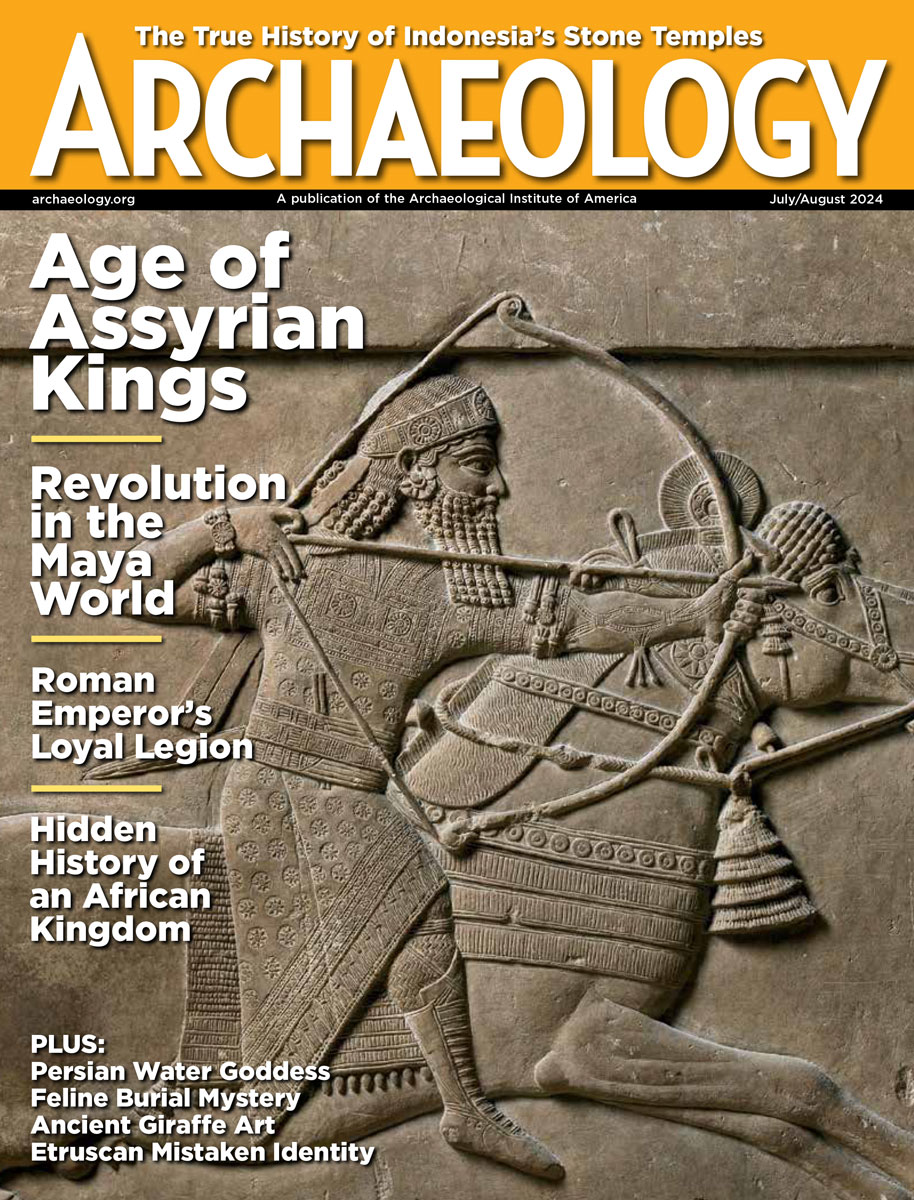Tuesday, March 18
March 18, 2008
Archaeologist Daniel Pullen of Florida State University has discovered a well-preserved, partially submerged, Mycenaean harbor town. There is little farmland near the site, and its 900 walls are aligned on a grid, suggesting that the settlement was a naval or military base.
Anthropologist Tim Weaver of the University of California, Davis, says that the differences between the skulls of Homo sapiens and Neanderthals were the result of random changes that occurred over time, and not adaptations that gave modern humans a competitive edge. Â
In Scotland, plumber David Barnes spotted a piece of sandstone bearing Neolithic carvings while walking on the beach. Â
The Stone Age hand axes from the bottom of the North Sea are in the news again-this time National Geographic News has the story. Â
The New York Times offers an article on the bones from 25 little individuals discovered by paleoanthropologist Lee Berger on Palau, and how they have been compared to the bones known as Homo floresiensis. Several scientists answer the questions Berger has raised in this latest skirmish of the “Hobbit Wars.” Â
Here’s the story of the Miami Circle, which was carved into Florida’s limestone at least 2,000 years ago.
- Comments Off on Tuesday, March 18
Monday, March 17
March 17, 2008
British scientist Humphry Davy was awarded a medal by the French Institute in 1807 for his work in electro-chemistry, but war between the two countries complicated its delivery. Davy’s widow eventually threw the prize into the sea. Now, the Royal Society of Chemistry wants the medal, and is sponsoring a dive in Mounts Bay to look for it. “It is really a long shot, but it is worth a try,” said society spokesman Brian Emsley.
“If there are enough people, and the bird is pretty easy to get, and it’s tasty, then it will likely go extinct,” said paleontologist Paul Koch on the gradual decline of the Chendytes, a flightless duck-like bird. Â
In a new study to be published in the Journal of Human Evolution, Michael Schillaci of the University of Toronto suggests that there were two “Out of Africa,” migrations: one 50,000 years ago, and one 100,000 years ago. Â
A 2,200-year-old jar burial was discovered at the Parthian village of Nakhl-e Ebrahim in Iran. Â
The 337 intact burials that were removed from the ancient site of Tse-whit-zen in Port Angeles, Washington, could be reburied at the site next month. Â
Forensic investigators are looking for graves of possible victims of the Manson family in California’s Death Valley National Park. Â
Greek culture minister Michalis Liapis held an international press conference at the new Acropolis Museum today, and said that momentum is building for the return of the Parthenon Marbles. Â
The Chinese Neolithic site of Niuheliang has been damaged by illicit iron-ore mining. Criminal charges have been filed against the miners, but officials say that the archaeological center can be restored. “This will not affect China’s application to have Niuheliang listed as a World Heritage site,” said Du Xiaofan, a UNESCO cultural heritage conservation specialist.
- Comments Off on Monday, March 17









